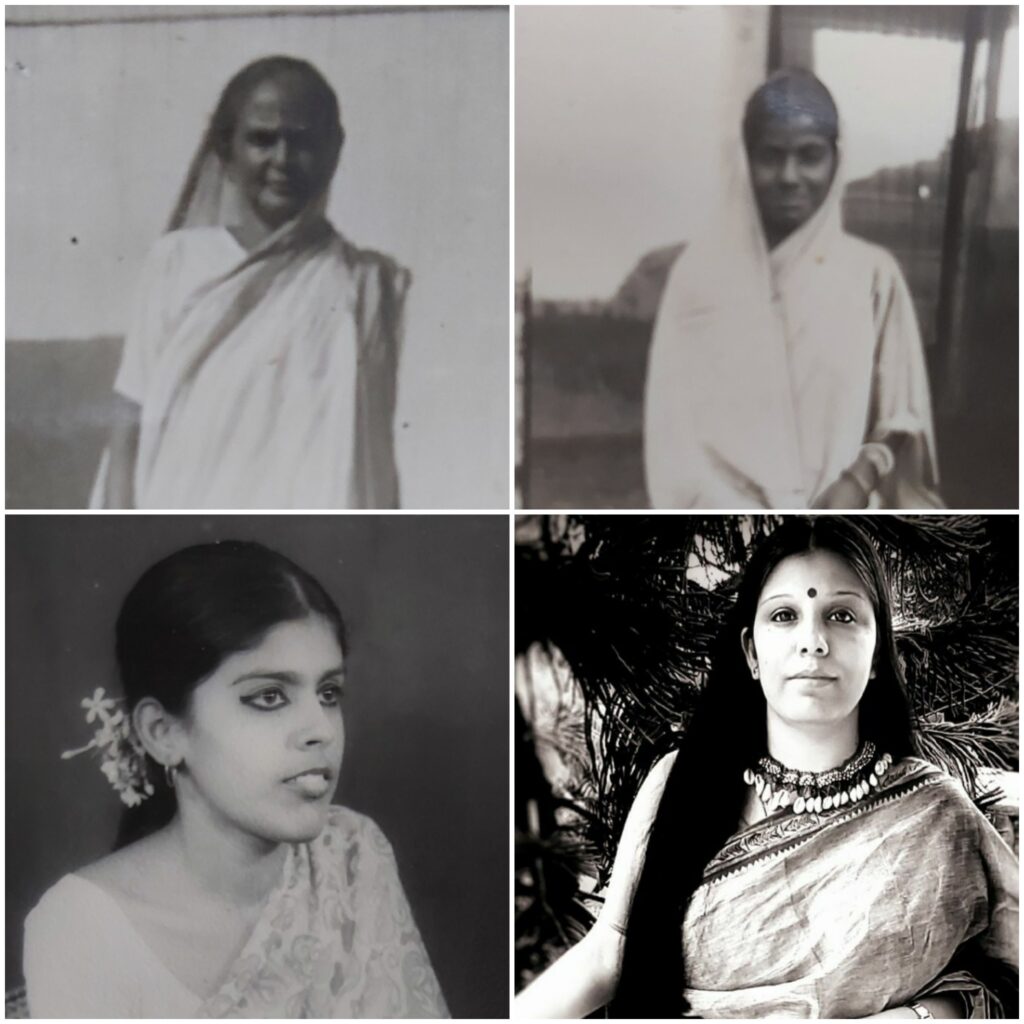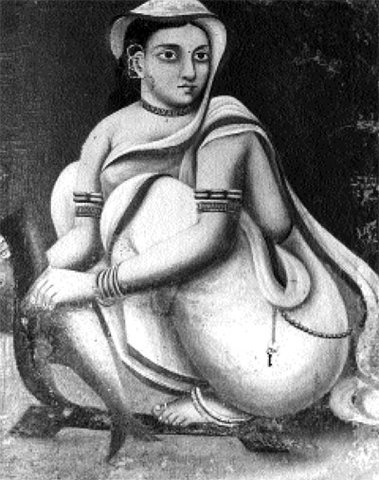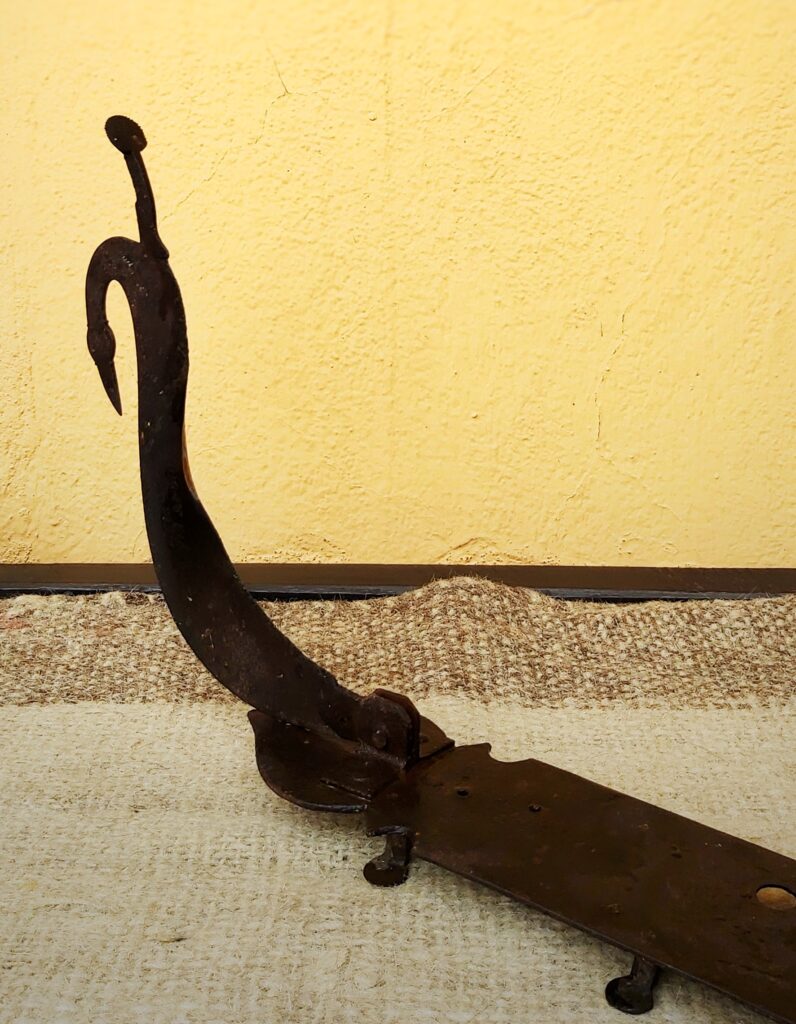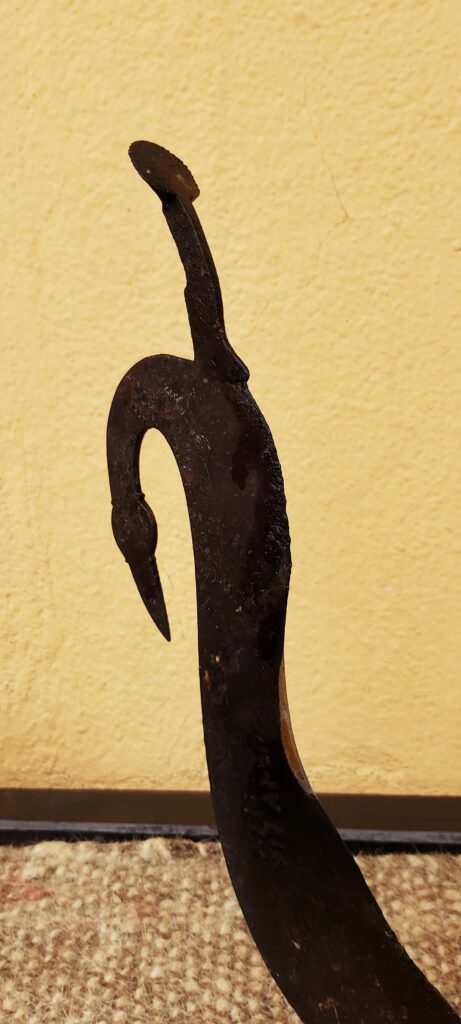TEXT AND PHOTOGRAPHS BY KASTURI MUKHERJEE
Asansol, West Bengal
I
The bonti is a kitchen instrument that is used in Indian households to peel, chop, shred, slice and dice vegetables and fruits, especially in the states of Bengal, Assam, Orissa. A woman at the bonti chattering away in the kitchen happens to be a part of Indian, especially Bengali, iconography.
This is one of the many bontis in my mother’s kitchen. She owns six of them in different sizes to serve different purposes. But this happens to be the largest and wholly metal. However, its size or constitution is not the reason why it is so special. This bonti belonged to, Khoma Devi, my mother’s paternal grandmother who died in 1968 and handed it over to my mother’s mother, Bani Bhattacharya who in turn handed it over to my mother, Krishna Mukherjee. When my maternal grandparents first began their married life, there used to be a gigantic bonti in their kitchen in town. My grandmother, Bani, wasn’t very comfortable about it. So when her mother-in-law, Khoma Devi, that is my great grandmother, learned of the fact, she had my grandfather come over to their home in the village and get it for his wife in town. And similarly when my mother, Krishna, began her married life, it was handed down to her by her mother, Bani, to make kitchen chores easier for her. It’s a Matrilineal heirloom in the family existing through four generations now.

My mother estimates this piece of kitchenware, made out of iron, must have been made by a local blacksmith somewhere in Birbhum, West Bengal, sometime around the very early 1900s. This bonti is more than a century old and still in use on a daily basis in our kitchen. It travelled with the family from Birbhum to the collieries in Burdwan and then, finally, to our home, where it has been for at least 33 years now.
II
Chitrita Banerjee’s article on Gastronomica: A Journal for Food Studies explains how a Bengali lexicon compiled by Jnanendramohan Das reveals that although the term bonti has been in the Bengali language for many years, it actually derives from the language of the ancient tribal inhabitants of the eastern regions of the subcontinent. Das traces the word bonti back to ancient Bengali narrative poems, such as Ghanaram Chakrabarti’s poem “Dharmamangal,” composed during the reign of Dharma Pala (775 to 810AD), the second ruler of Bengal’s Pala Dynasty. Banerjee further points out that in his definitive history of Bengal, Bangalir Itihash, the historian Nihar Ranjan Ray presents compelling evidence of the proto-Australoid peoples who settled in Bengal long before the Aryans came to India and whose language, customs, and ritualistic beliefs still permeate the cultural life of Bengal. Ray also notes that Buddhist terracotta sculptures from the days of the Pala dynasty depict people using the bonti to cut and portion fish.

From Chitrita Banerjee’s seminal text, The Hour of the Goddess: Memories of Women, Food, and Ritual in Bengal, we gather that the bonti can also be seen in Kalighat paintings, a body of indigenous works produced in the vicinity of the Kalighat Temple which was built in 1829 on the banks of the River Hooghly (a branch of the Ganges) in Calcutta. As Calcutta grew under the British rule, and its Bengali residents developed the semi-decadent “babu” culture, the Kalighat painters focused their attention on urban, rather than on rural, life. Banerjee gives us yet another, almost erotic, reference:
Shobha, a fascinating album of photographs by Gurudas Chattopadhyay published around 1930. His photographs portray some of Calcutta’s best-known prostitutes and are obviously intended for erotic stimulation. But this is no collection of Playboy-like nudes. Instead, each woman has been photographed fully clothed and seated before a bonti! Here is a study in body language: the straight back, the bifurcated legs (one crossed, the other raised), the coy eyes peeking out from under the sari covering the head. To the Bengali viewer/voyeur of the time, the bonti, by enforcing this posture, created a uniquely erotic vision of the female figure, rich in implication and suggestiveness.

This brings me to how objects might institute sexual identities and demarcate the interaction of human subjects accordingly. It is not unknown how society is, in its organization and distribution of materials and objects in space, phallocentric. Knife seems to be one such object designed to reflect and assist the formation of masculine identity. The bonti however challenges this masculine notion. You will only rarely notice a man at a bonti, except for perhaps at Bengali fish markets for commercial purposes and even then the cleaver is more popular. Bonti reflects the feminine. The bonti is basically a curved blade rising out of a narrow, flat base. The curves of the bonti become synonymous with the soft curves of the female. Smooth and flowy, it is opposed to the linear, unswerving, hard structure of the knife. But where the dangerous edge is concerned, the Oriental, feminine bonti is no less than the Occidental, masculine knife. Bengali women, in more than one instance, have been seen to use the bonti as a weapon of violence, against patriarchal domination. It has also been used in this manner by simple, regular women, housewives, numerous times during India’s struggle for Independence from the 200 year old British rule. In this it remains no longer a simple, nondescript kitchenware. Not to dramatize, if Artemis has her bow, the common Bengali woman has her bonti.
III

The bonti blade is generally made of iron, and it tends to rust if not immediately washed and dried after use. Repeated use blunts the blade, so itinerant experts cycle through and across cities with special gear for sharpening bontis and knives. In the photo alongside you can see the main curved blade, used to dice, slice, etc, has a crowned tip called “Kuruni”, used specifically to desiccate coconuts. This blade is also ornamentally shaped into the likeness of a peacock with its beak bowed down and the Kuruni serving as the spread train to build on the same peacock-likeness.
The bonti was popular when most Bengalis lived in extended, multi-generational families and women had to make large meals every day. Usually the elderly grandmother or widowed aunt was responsible for cutting and arranging the vegetables, while the younger women took on the more harrowing task of cooking over the hot stove. This ritual of cutting vegetables, called “kutno kota” in Bengali, was, and is still in some households, almost as important as the daily rituals carried out for the household gods.
My mother did not grow up in a multigenerational, extended family. Neither did I. So neither of us have the taste of a large kitchen community. However, my mother is dexterous at using the bonti and still does when in the kitchen. Every vegetable requires to be cut in a specific shape for a specific recipe and the bonti perfectly caters to that need. I admire the way my mother makes thin slices out of cucumbers and carrots and artistically shreds cabbages. One of my favourite dishes is her special spicy cabbage with garam masala.
I have not been able to master the art and, unfortunately, found the masculine knife easier to handle. I was never allowed anywhere near the bonti when I was a child and am still cautioned if I am in the kitchen and the bonti is around with its blade upright. She did try to show me how to use it but I failed miserably! It’s not easy as it sounds!
Unlike me, my mother is way more at ease with the bonti. And I doubt, the women before her even knew how to use a knife as kitchenware. In our fast lives, with most of us spending a major amount of our time at our workplaces that leaves no time for intensive kitchening, the bonti is being replaced by the handier kitchen knives, leading to the gradual vanishing of the object from Indian kitchens. Probably because, in an era of the instant with a proclivity towards westernization, the bonti fails the test of versitality. But then, I often think, it’s a matter of habit really.
